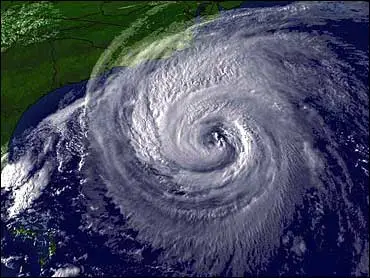
World Meteorological Organization, National Hurricane Center, NOAA
The Atlantic basin includes the Atlantic Ocean, Caribbean Sea, and Gulf of Mexico. The normal season begins on June 1 and ends November 30. Occasionally a storm might fall out of season in May or December, but that is rare.
Naming a tropical cyclone
A storm gets a name when it becomes a tropical storm. By definition that is when sustained winds reach 39-73 mph, but public reports from the National Hurricane Center are given in 5 and 0. So a storm will be reported with a name when winds reach 40 mph or higher. Hurricanes have winds of 74 mph, but for the same reason, public reports would show it at 75 mph. The category of a storm is based on the Saffir-Simpson Scale. Check back for more on that in a later report.
Naming storms givens a sense of order and even personality to these storms. In fact, they do tend to have their unique qualities, but the names help to identify systems for research, historical, and even insurance purposes. In 1953, the United States began naming storms alphabetically with primarily female names. Originally it was Navy meteorologists who tracked them across the wide expanse of water. Legend has it that while holding some sense of humor, these names were originally attributed to ex-girlfriends.
How names are decided
In 1979, male names were introduced and alternated with female names. The World Meteorological Organization is responsible for the process. There is a list of names for 6 years. One year starts with male names, the next starts with a female name, and so on. Every six years the same list of names repeats. So if some sound familiar, there is a good reason. It might have been used six years prior.
Retired names
If a storm is notably costly or deadly, it may be retired. If it is decided at an annual WMO meeting to warrant it, then a name is removed and a new one with the same letter is put in its place.
Letters not used
Only 21 names are included on each list, for popularity purposes. The letters not included in the list since there are not enough acceptable replacements are:
Q, U, X, Y, Z
Greek Alphabet
If the 21 names are used up and the tropical season continues, then the Greek Alphabet takes over. This has only happened once, in 2005. That record year the naming went up to Zeta (27 storms). See a video recap of that historical season here.
Related Articles
Tropical Storm Formation: Origin Maps Each 10 Days and Video
Please share your thoughts, best weather pics/video, or just keep in touch via social media
-
Facebook: Justin Berk, Meteorologist
-
Twitter: @JustinWeather
-
Instagram: justinweather
Keep In Touch Every Day
Click here to sign up for email alerts…. Just in case you don’t get the post on your social media feed
 Get the award winning Kid Weather App I made with my oldest son and support our love for science, weather, and technology. Our 3 year anniversary of the release and our contribution to STEM education is this November. It has been downloaded in 60 countries, and works in both temperature scales. With your support we can expand on the fun introduction to science and real weather.
Get the award winning Kid Weather App I made with my oldest son and support our love for science, weather, and technology. Our 3 year anniversary of the release and our contribution to STEM education is this November. It has been downloaded in 60 countries, and works in both temperature scales. With your support we can expand on the fun introduction to science and real weather.
